Synthesis and Evaluation of Chemical Tools for Biology
Mentors: Gary Sulikowski (Chemistry), Dave Weaver (Pharmacology), and Patrick Grohar (Cancer Biology)
Description: REU students will participate in the chemical synthesis of probe molecules, such as dyes, affinity tags, and photoaffinity tags, for studies in neuroscience or cancer biology.
Researcher Skills and Interests: This project is best suited for those students who have taken organic chemistry, including lab. Students should be interested in synthetic organic chemistry, the use of separation/purification techniques (chromatography), analysis (NMR spectroscopy), medicinal chemistry, and in vivo phenotyping.
Key Words: organic synthesis, molecular pharmacology, neuroscience
|
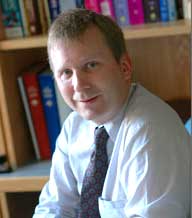
|

|
Generating Antibodies Against Breast Cancer Stem Cells. Synthesis of Ganglioside GD2 Clusters
Mentors: Steve Townsend (Chemistry), Andries Zijlstra (Pathology, Microbiology, and Immunology)
Description: Generating Antibodies Against Breast Cancer Stem Cells. Synthesis of Ganglioside GD2 Clusters. (Mentors: Steven D. Townsend and Andries Zijlstra) Cancer cell subpopulations with progenitor cell-like properties have been described for a number of solid tumors. These cell types are known as cancer stem cells (CSCs) because they demonstrate increased resistance to chemotherapy and radiation; and are capable of establishing metastasis.1 Typically, these molecules are isolated based on differential cell surface marker expression and are then characterized for differentiation propertiesthrough in vitro mammosphere assays and in vivo tumorigenicity in mouse models (NOD/SCID). Interestingly, only a small number of biomarkers for CSCs have been identified. In 2012, Andreeff and coworkers reported that ganglioside GD2 identifies a fraction of stem cells in patient samples and breast cancer cell lines capable of forming mammospheres and initiating tumors. Further studies revealed that GD3 synthase was overexpressed on GD2 bearing CSCs and interference with expression of this enzyme reduced the population of CSC and related properties.2 Since increased levels of CSCs in primary tumors directly correlate with a higher tumor grade, and ingeneral, a poorer prognosis it is important to develop methods to target this subpopulation. Unfortunately, progress in developing drugs targeting CSCs has been slow and few FDA approved drugsprovide additional considerations for biomarkers.
Researcher Skills and Interests: TBA
Key Words: glycobiology, organic synthesis, cancer, NMR
|
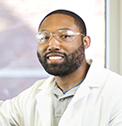
|
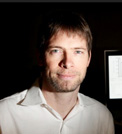
|
Molecular Trolling for Point of Care Viral Detection
Mentors: David Wright (Chemistry) and Rick Haselton (Biomedical Engineering)
Description: This work will focus on the design of a new diagnostic device for the multiplexed detections of respiratory viruses. Molecular hooks (capture stem-loop hairpin DNA constructs) are directly coordinated at known locations on a gold clad polyester filament. Filament motion is used to troll for and entrain viral RNA present in a test solution. Subsequent to capture, any necessary processing steps are carried-out using pull-through processing and fluorescence reporting.
Researcher Skills and Interests: This project is ideally suited for the student interested in multiple aspects of chemistry including inorganic chemistry, analytical chemistry, biochemistry and nanotechnology.
Key Words: bioanylitical, mass spectrometry, cell signaling
|
 |
 |
New Methodologies in Natural Products Discovery
Mentors: John McLean (Chemistry) and Brian Bachmann (Chemistry)
Description: One of the challenging aspects of natural product discovery for identifying new compounds as potential drugs is extracting promising target compounds from complex biological mixtures. The Bachmann laboratory has particular expertise in isolating extracts from cave-dwelling organisms, which will be analyzed using ultrafast (<ms) 2D separations using ion mobility-mass spectrometry (IM-MS). In IM-MS, analytes from complex samples are separated on the basis of both molecular structure and mass, respectively. By isolating those signals that correspond to potentially interesting structures will be guiding in deciding which of 1000s of different molecular species should be targeted to yield novel natural products.
Researcher Skills and Interests: This project is best suited for those students who have taken analytical, physical, and organic chemistry. Students will use state-of-the-art mass spectrometry instrumentation to collect data and interpret those data using protocols developed from physical chemistry theory.
Key Words: natural products, mass spectrometry, microbes
|
 |

|
Mass Spectrometry Directed Phosphoproteomics
in Cancer Biology
Mentors: John McLean (Chemistry) and Donna Webb (Biological Sciences)
Description: Cell migration plays a pivotal role in diverse biological and pathological processes, including embryogenesis, the inflammatory response, wound repair, arthritis, atherosclerosis and cancer. Post-translational modifications, such as phosphorylation, of critical proteins are emerging as key steps in the regulation of cell migration. Thus, quantitatively assessing changes in phosphorylation of migration proteins should provide significant insight into the regulation of this important cellular process. Recently, mass spectrometry (MS) has come to the forefront of phosphoproteomic quantification, but current methods face significant challenges. To address these limitations, we are developing a technology using new protein phosphorylation labeling reagents that provides simultaneous identification and quantification on a global level, without the need for a priori knowledge of where these events occur. Specifically, this new class of reagents provides rapid identification at a lower cost and with higher sensitivity than contemporary labeling strategies. This research involves using new labeling reagents to derivatize cell lysates and analyzing for protein phosphorylation using state-of-the-art MS instrumentation.
Researcher Skills and Interests: This project is best suited for those students who have taken analytical, physical, and organic chemistry. Students will use new chemical derivatization techniques and state-of-the-art mass spectrometry instrumentation to collect data and interpret those data using bioinformatic algorithms.
Key Words: bioanalytical, bioinformatics, mass spectrometry
|
 |
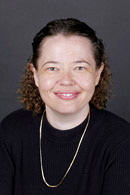
|
Inborn Errors in the Cholesterol Biosynthesis Pathway: Smith-Lemli-Optiz Syndrome and Oxidative Stress
Mentors: Ned A. Porter (Chemistry) and Zeljka Korade (Biochemistry)
Description: Smith-Lemli-Opitz syndrome is a devastating developmental disorder that effects about 1 in 10,000 individuals. It results in mental retardation, seizures, failure to thrive. Mortality in the first few years of life is 25-50%. Our hypothesis is that one of the underlying causes of the syndrome is a genetic defect that leads to the formation of toxic metabolites that result in altered neuronal development. The project focuses on the mechanism of formation of the toxic metabolites and the biological activities of those compounds.
Researcher Skills and Interests: This project is suited for students with a background in organic chemistry and an interest in biological processes.
Key Words: organic synthesis, lipid metabolism
|
 |
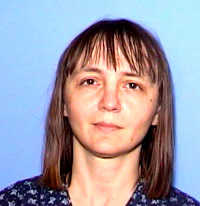
|
Synthesis of Chiral Amines for Medicinal Chemistry
Mentors: Jeff Johnston (Chemistry) and Kip Guy (Chemistry)
Description: Many potential therapeutics are chiral nonracemic small molecules. Racemic small molecules contain an equal mixture of an organic compound present as two enantiomers: non-superimposable mirror images of one another. We have developed new reactions that produce only one of the two enantiomers, and this project entails the preparation of important single enantiomer amines for use in fragment-based screening and medicinal chemistry studies.
Researcher Skills and Interests: This project is best suited for those students that have completed a full year of organic chemistry and its laboratory - additional laboratory experience in synthetic organic chemistry is advantageous. Students should be interested in synthetic organic chemistry, and the use of separation/purification techniques (chromatography) and analysis (NMR spectroscopy).
Key Words: organic synthesis, asymmetric synthesis, cancer
|
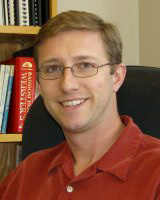
|

|
Cellular Response to Lipid Oxidation Products
Mentors: Larry Marnett (Biochemistry), and Gary Sulikowski (Chemistry)
Description: TBA
Researcher Skills and Interests: TBA
Key Words: metabolism, organic synthesis, molecular probes, cancer, inflammation
Key Words: lipid metabolism, organic synthesis, molecular probes, cancer
|
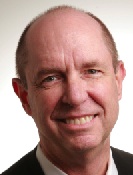
|

|
Structure and Engineering of Biosynthetic Enzymes
Mentors: Brian Bachmann (Chemistry) and Tina Iverson(Pharmacology)
Description: We are engineering new biocatalysts for the production of clinically important pharmaceuticals. Using a combination of protein structure guided mutagenesis and "directed evolution" methodologies, we are attempting to find biological replacements for important chemical processes. Ultimately these catalysts may offer "green" and less expensive ways to manufacture life saving drugs.
Researcher Skills and Interests: This project is best suited for those students who have taken a biochemistry course and have a background understanding and/or direct experience in basic biomolecular methods such as PCR, cloning, protein expression and purification and bioassay.
Key Words: cloning, PCR, protein purification, x-ray crystallography
|

|

|
Exploring Neutralization of S. Aureus Infections via
Trace Metal Binding by Calprotectin
Mentors: Walter Chazin (Biochemistry) and Eric Skaar(Microbiology/Immunology)
Description: Calprotectin is an integral part of the innate immune response. In tissues infected by bacterial pathogens such as Staphylococcus aureus, calprotectin acts to suppress the growth of the invading organism. We have obtained evidence that the mechanism for the growth suppressing activities of calprotectin involves the binding of essential trace metals such as zinc and manganese that are critical for the organism's cellular metabolism. This project involves testing this hypothesis through the design, production and evaluation of calprotectin mutants that reduce its capacity for binding these essential metals.
Researcher Skills and Interests: This project is best suited to students that have taken a biochemistry course and who may have knowledge of site-directed mutagenesis by PCR and protein purification. Students should possess an interest in learning state of the art multi-disciplinary research and a combination of the following techniques: bacterial expression and purification of proteins, biophysical analysis using NMR and isothermal titration calorimetry, and cell growth assays.
Key Words: PCR, protein purification, NMR, mutagenesis)
|

|

|
Protein Adducts Resulting from Lipid Peroxidation
Mentors: Ned Porter (Chemistry) and Daniel Liebler (Pharmacology)
Description: Polyunsaturated lipids undergo reaction with molecular oxygen in vivo and form reactive byproducts that modify proteins. The project focuses on the development of methods to identify these modified proteins and assess the consequences of such modifications. We are particularly interested in how such modifications may impact plasma lipids such as LDL (bad cholesterol) and HDL (good cholesterol).
Researcher Skills and Interests: This project is suited for students have taken organic chemistry and one year of biological sciences.
Key Words: organic synthesis, mass spectrometry, proteomics
|

|
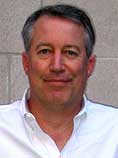
|
Natural Product Synthesis and Biology
Mentors: Gary Sulikowski (Chemistry), Brian Bachmann (Chemistry), and Jonathan Irish (Pathology, Microbiology and Immunology)
Description: REU students will engage in the multi-step synthesis of small molecule natural products of modest complexity. The natural products of interest have demonstrated biological activity and the synthetic scheme will allow access to structural modifications providing analogs for further biological evaluation.
Researcher Skills and Interests: This project is best suited for those students who have taken organic chemistry including lab. Students should possess and interest in learning the following techniques: interpreting NMR spectra, and organic synthesis.
Key Words: organic synthesis, NMR, biochemistry
|
 |

|
Quantum Dot Nanoconjugate Imaging of Neural Receptors
Mentors: Sandra Rosenthal (Chemistry) and Randy Blakely (Pharmacology)
Description: In our research we synthesize derivatives of drugs such that they can be attached to fluorescent quantum dots, thereby creating nanoconjugates. These nanoconjugates are then used to image individual nerotransmitter transporter porteins. In this way we can obtain movies of the dynamics of these proteins, which are important in a wide range of mental disorders.
Researcher Skills and Interests: This project is best suited for a student interedted in synthetic organic chemistry and an interest in biological problems. Student must have completed two semesters of organic chemistry laboratory.
Key Words: neuroscience, organic synthesis, molecular probes
|
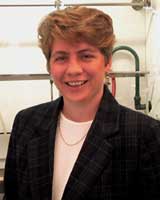
|

|
Discovery and Synthesis of New Antibiotics
Mentors: Gary Sulikowski (Chemistry), Eric Skaar (Microbiology & Immunology)
Description: REU students who contribute to this project will focus on the multi-step synthesis of small molecules. Students will learn to design and synthesize molecules to improve biological potency within a chemical series. Our goal is to establish structure activity relationships (SAR) across several series and discover a tool compound for biological target identification of a new class of antibiotics.
Researcher Skills and Interests: This project is best suited for those students who have taken organic chemistry including lab. Students should be interested in synthetic organic chemistry, the use of separation/purification techniques (chromatography), analysis (NMR spectroscopy) and medicinal chemistry.
Key Words: organic synthesis, antimicrobial, NMR
|

|

|
Novel Obesity Therapeutics through Cheminformatics
in Drug Discovery
Mentors: Jens Meiler (Chemistry), Dave Weaver (Pharmacology)
Description: The student will use computational methods to analyze the interaction of chemicals with neuropeptide Y4 receptor (Y4). The objective of these studies is to identify features of the chemical structure that are critical for allosteric regulation of Y4and therefore key for a therapeutic activity. The student will use computational docking techniques as well as machine learning approaches (artificial intelligence) to study these structure-activity relations (SAR). Through collaboration with the Weaver laboratory results will verified through experimental studies such as mutagenesis of Y4.
Researcher Skills and Interests: This project is best suited for those students for have taken general chemistry, organic chemistry, physical chemistry, and mathematics. Knowledge in computer science is advantageous. Students should possess an interest in learning one or more of the following techniques: machine learning, small molecule docking, pharmacophore mapping, computer programming.
Key Words: organic synthesis, computational
|
 |

|
Novel Methods for Discovery of Antitumor Agents Screening Natural Products
Mentors: Jonathan Irish (Chemistry), Brian Bachmann (Chemistry)
Description: TBA
Researcher Skills and Interests: TBA
Key Words: organic synthesis, cancer, NMR, natural products
|

|

|
Discovery of Small Molecule Modulators of GIRK Channels
Mentors: Craig Lindsley (Chemistry), Dave Weaver (Pharmacology)
Description: TBA
Researcher Skills and Interests: TBA
Key Words: organic synthesis, NMR, molecular pharmacology, neuroscience
|
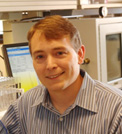
|
 |
Determination of the Absolute Stereochemistry of Chiral Molecules
Mentor: Prasad Polavarapu (Chemistry)
Description: A majority of the drugs used for the upkeep of human health are derived from chiral organic molecules and the enantiomers of these chiral drugs have significantly different biological properties. A chiral drug cannot be marketed for human consumption until the absolute configuration of that chiral drug has been determined and the biological roles of the enantiomers have been determined. However, the absolute stereochemistry of these chiral compounds remains unknown if the enantiomers are resolved using chromatographic columns and cannot be crystallized. Similarly most of the natural products are chiral and often contain multiple centers of chirality. It is difficult to establish the absolute configuration at each of the chiral centers when these natural products cannot be obtained as single crystals. The research group of Polavarapu uses a combination of chiroptical spectroscopic and computational methods to determine the absolute stereochemistry of chiral molecules. Students working in this program will actively engage in acquiring the experimental chiroptical spectroscopic data and undertaking quantum chemical computational studies to determine the absolute configurations of chiral molecules.
Researcher Skills and Interests: This project is best suited for those students who have taken at least organic chemistry. Interest and background in physical chemistry would be useful. Students will collect experimental chiroptical spectroscopic data and analyze these data in conjunction with quantum chemical computational predictions.
|
 |
|
Selective, Catalytic C-H Functionalization Through Carbene Intermediates
Mentor: Nathan Schley (Chemistry)
Description: Our research group is exploring the chemistry of late transition-metal Fischer carbene complexes generated by C-H activation with the aim of developing selective catalysts for the functionalization of organic molecules. Or aim is to develop catalytic, synthetic tools for the elaboration of lead compounds as part of broader efforts towards drug discovery at Vanderbilt. REU students will participate in the synthesis of organic ligands and their associated organometallic complexes, as well as pursue efforts to elucidate the stoichiometric and catalytic behavior of these complexes towards organic molecules.
Researcher Skills and Interests: Projects in our research group are most appropriate for students who have taken at least one year of organic chemistry and an associated laboratory course. Students should be interested in synthetic organometallic chemistry, the handling of air-sensitive materials, and the analysis of compounds by spectroscopic methods.
Key Words: organometallics, catalysis
|
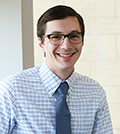 |
|




































